What are the Different Forms of Business Organisation?
- Blog|Company Law|
- 18 Min Read
- By Taxmann
- |
- Last Updated on 24 December, 2024
Table of Content
1. Types of Business Organisation
2. Choice of a Business Organization
3. Factors governing the decisions for suitable form of organisation
4. Features of various Business Organisations
Check out Taxmann's Setting up of Business Entities and Closure (SUBEC) | TEXTBOOK which presents the subject matter (topic-wise) in simple & concise language with presentation in a tabular format along with examples, comments & explanatory notes. It also covers past exam questions of ICSI until June 2022 and chapter-wise marks distribution. CS Executive | New Syllabus | Dec. 2022 Exams
1. Types of Business Organisation
1.1 Sole Proprietorship
-
- A form of business wherein one person owns all the assets of the business.
- No legal formalities are required to create a sole proprietorship other than an appropriate licensing to conduct a business and registration of business name if it differs from that sole proprietorship.
- The owner reports income/loss from this business along with is personal income tax return.
1.2 Partnership Firm
-
- Partnership firms in India are governed by the Indian Partnership Act, 1932.
- Partnership firms are created by drafting a partnership deed among the partners. The partnership deed is registered to make a firm.
- Section 464 of the Companies Act, 2013 empowers the Central Government to prescribe maximum number of partners in a firm but the number of partners so prescribed cannot be more than 100. The Central Government has prescribed maximum number of partners in a firm to be 50 vide Rule 10 of the Companies (Miscellaneous) Rules, 2014. Thus, in effect, a partnership firm cannot have more than 50 members.
1.3 Hindu Undivided Family (HUF)
-
- HUF is taxed separately from its members.
- One can save taxes by creating a family unit and pooling in assets to form a HUF.
- HUF has its own PAN and files tax returns independent of its members.
Authors’ Comment: Hindu family come together and form a HUF.
1.4 Limited Liability Partnership (LLP)
LLP is an alternate corporate business entity that provides the benefits of limited liability of a company but allows its members the flexibility of organizing their internal management on the basis of a mutually-arrived agreement as is the case in a partnership firm introduced in India by way of limited Liability Partnership Act, 2008.
1.5 Co-operative Society
A cooperative organization is an association of persons (usually of limited means) who have voluntarily joined together to achieve a common economic end through the formation of a democratically controlled organization making equitable distributions to the capital required and accepting a fair share of risk and benefits of the undertaking.
1.6 Section 8 Company
-
- Section 8 company is a company established for promoting commerce, art, science, sports, education, research, social welfare, religion, charity, protection of environment or any such other object provided the profits (if any) or other income is applied for promoting only the objects of the company.
- No dividend is paid to its members Section 8 Companies are registered under the Companies Act, 2013.
1.7 One Person Company
An OPC means a company with:
-
- only 1 person as a member
- Share holder can make only 1 nominee who shall become a shareholder in case of death/incapacity of original stakeholder.
1.8 Private Company
Private company is a company which has the following characteristics:
-
- Shareholders right to transfer shares is restricted.
- Minimum number of 2 members in company.
- Number of shareholders is limited to 200.
- An invitation to the public to subscribe to any shares or debentures or any type of security is prohibited.
1.9 Public Company
A public company is a company which has the following characteristics:
-
- Shareholders right to transfer share; is not restricted.
- Minimum 7 members.
- An invitation to the public to subscribe to any shares or debentures or any type of security is permitted.
2. Choice of a Business Organization
-
- A person must carefully consider all the advantages and disadvantages of each type of entity before choosing one of the forms of business entity which suited best to the nature and size of the business which the entrepreneur/business owner desires to undertake.
- The different forms of business organization differ from each other in respect of division of profit, control, risk, legal formalities, flexibility, etc
- Business enterprise can be owned and organized in several forms. Each form of organization has its own merits and demerits. The ultimate choice of the form of business depends upon the balancing of the advantages and disadvantages of the various forms of business.
- The right choice of the form of the business is very crucial because it determines the power, control, risk and responsibility of the entrepreneur as well as the division of profits and losses.
- Being a long-term commitment, the choice of the form of business should be made after considerable thought and deliberation. The selection of a suitable form of business organization is an important entrepreneurial decision because it influences the success and growth of a business.
- Once a form of business organization is chosen it is very difficult to switch over to another form because it needs the winding up, dissolution of the existing organization which may be treated as a case which is raised by one-self to face with the complex issues and procedures which ultimately results into the waste of time, effort and money.
- Closure of business will entail loss of business opportunity, capital and employment. The volume of risks and liabilities as well as the willingness of the owners to bear it is also an important consideration in choosing the right business entity.
Example: While starting a business and at a later stage for meeting the needs of its growth and expansion, it is desirable to address this issue at both these levels.
3. Factors governing the decisions for suitable form of organisation
3.1 Nature of Business Activity
-
- This is an important factor having a direct bearing on the choice of a form of ownership.
- In small trading businesses, professions, and rendering of personal services, sole-proprietorship is predominant.
Examples are Laundromats, beauty parlours, repair shops, small retail stores, medicine stores, dentist, accounting concerns, boarding-house, restaurants, painters, decorators, bakers, confectioners, tailoring shops, small scale shoe repairers and manufacturers, etc.
- The partnership is suitable in all those cases where sole proprietorship is suitable, provided the business is to be carried on a slightly bigger scale with help of one or more partner (owner). Partnership is also advantageous in case of manufacturing activities on a modest scale. The finance, trading and real estate industries.
Examples are financial businesses that find this for advantageous are tax, accounting, stockbrokerage firms, and consulting agencies etc. Also, Service enterprises like hotels and lodging places; trading enterprises, such as wholesale trade, retail houses; small scale manufacturing enterprises, small drug manufacturers, etc. can be undertaken in the form of partnership.
- Where the persons intending to start a business wish to launch a business organization clothed with a legal entity and in corporate form with a feature of having their sole ownership and control thereon, they may decide to form a One-Person Company (OPC). OPC is a new concept in India and hybrid of Sole-Proprietor and Company form of business.
- LLP are suitable generally in the service industry and where there is no dependence on large amounts of financing from outside sources.
- A One-Person Company (OPC), LLP and limited company exist as a separate business entity in the eyes of law and this creates a wall between the personal assets of the investor and that of the business. In these form of business organizations the personal property of the owner(s) is protected and this gives the owner(s) the ability to build the business credit, get loans and raise capital.
3.2 Scale of Operations
-
- If the scale of operations of business activities is small, sole proprietorship or a One Person Company (OPC) is suitable.
- If the scale of operations is modest – neither too small nor too large – partnership or limited liability partnership (LLP) is preferable.
- In case of large scale of operations, the company form is advantageous.
- The scale of business operations depends upon the size of the market area served, which, in turn, depends upon the size of demand for goods and services. If the market area is small, local – sole-proprietorship, OPC or partnership is opted. If the demand originates from a large area- partnership including LLP or Company may be adopted.
Note: In accordance with the provision of Micro, Small & Medium Enterprises Development (MSMED) Act, 2006 the Micro, Small and Medium Enterprises (MSME) are classified as below:
- a micro enterprise, where the investment in plant and machinery or equipment does not exceed one crore rupees and turnover does not exceed five crore rupees;
- a small enterprise, where the investment in plant and machinery or equipment does not exceed ten crore rupees and turnover does not exceed fifty crore rupees; and
- a medium enterprise, where the investment in plant and machinery or equipment does not exceed fifty crore rupees and turnover does not exceed two hundred and fifty crore rupees.
3.3 Capital Requirements
-
- Capital is one of the most crucial factors affecting the choice of a particular form of ownership organization. Requirement of capital is closely related to the type of business and scale of operations.
- Enterprises requiring heavy investment (like iron and steel plants, large scale infrastructure projects etc.) should be organized as companies. Depending on the capital required, they can be set up as public companies and in some cases may be in the form of listed companies by raising money from the public and being listed on the stock exchanges.
- Enterprises requiring small investment (like retail business stores, personal service enterprises, etc.) can be best organized as sole proprietorships or even as Partnerships. Apart from the initial capital required to start a business, the future capital requirements – to meet modernization, expansion, and diversification plans – also affect the choice of form of organization.
- In sole proprietorship, the owner may raise additional capital by borrowing, by purchasing on credit and by investing additional amounts himself. However, Banks and suppliers will look closely at the proprietor’s individual financial resources before sanctioning any loans or advances.
- Partnerships can often raise funds with greater ease since the resources and credit of all partners are combined in a single enterprise.
- Companies are usually best able to attract capital because investors are assured that their liability will be limited, their operations are in public domain in the transparent manner, easily accessible and the ownership can be transferred to other investors.
3.4 Managerial Ability
It is difficult for a sole proprietor to have expertise in all functional areas of business. In other forms of organizations like partnership and company, there is division of work among the partners which allows the partners to specialize in specific areas, leading to better outputs and decision making. However, this may sometimes lead to conflicts due to differences of opinion. Company form of organization is a better alternative if the operations are far flung, complex in nature and require professional management at various levels.
3.5 Degree of Control and Management
-
- The degree of control and management that an entrepreneur desires to have over business affects the choice of form of organization.
- In sole proprietorship and OPC: Ownership, management, and control are completely fused, and therefore, an entrepreneur has complete control over his business.
- In partnership: management and control of business is jointly shared by the partners and their specific rights, duties and responsibilities would be documented through incorporating various clauses in this regard in the partnership deed. They have equal voice in the management of partnership business except where they agree to divide among themselves the business responsibilities in a different manner. Even then, they are legally accountable to each other.
- In a company: However, there is divergence between ownership and management, the management and control of the company business is entrusted to the Board, who are generally the elected representatives of shareholders.
- Thus, a person wishing to have complete and direct control of business prefers proprietary organization rather than partnership or company. If he is prepared to share it with others, he will choose partnership. On the other hand if the activities are large, professional managers are required to handle the day-to-day affairs and there is need for corporate structure and management, he will prefer the company form of organization.
3.6 Degree of Risk and Liability
-
- The size of risk and the willingness of owners to bear it is an important consideration in the selection of a form of business organization. The amount of risk involved in a business depends among other factors like on the nature and size of business.
- Smaller the size of business, smaller the amount of risk. In nutshell, a sole proprietary business carries small amount of risk with it as compared to partnership or company. However, the sole proprietor is personally liable for all the debts of the business to the extent of his entire property.
- In partnership, partners are individually and jointly responsible for the liabilities of the partnership firm.
- Companies and LLPs have a real advantage, as far as the risk is concerned, over the other forms of business organization. Creditors can force payment of their claims only to the limit of the company’s and LLPs assets. In nutshell, while a shareholder/member/partner may lose the entire money he puts into or agreed to put into the company and LLP, he cannot be forced to contribute additional funds out of his own pocket to satisfy the business debts of the company and LLP.
3.7 Stability of Business
-
- A stable business is preferred by the owners in so far as it helps him in attracting suppliers of capital who look for safety of investment and regular return and also helps in getting competent workers and managers who look for security of service and opportunities of advancement.
- From this point of view, sole proprietorships are not stable although no time limit is placed on them by law. The illness of owner may derange the business and his death can lead to permanent closing off the business operations.
- Partnerships are also unstable since they are terminated by the death, insolvency, insanity, retirement, admission, expulsion or withdrawal of/ by one of the partners.
- Companies and LLPs have the most business stability due to its feature or perpetuity being an artificial or legal person. The life of the company and LLP is not dependent upon the life of its members/partners. Members/partners may come members/partners may go but the company/LLP goes on forever unless and until it being wound up.
3.8 Flexibility of Administration
-
- The form of organization chosen should allow flexibility of administration. The flexibility of administration is closely related to the internal organization of a business, i.e. the manner in which organizational activities are structured into departments, sections, and units with a clear definition of authority and responsibility.
- The internal functioning of a sole proprietary business is very simple. Therefore, any change in its administration can be affected with least inconvenience and loss.
- To the large extent, the case is the same in a partnership business also.
- In case of company, administration is not that flexible because its activities are conducted on a large scale and they are quite rigidly structured. Thus, in this form of structures any substantial change in the existing line of business activity.
Example: From cotton textiles to sugar manufacturing may not be permitted by law if such a provision is not made in the ‘objects clause’ of the Memorandum of Association of the company.
- In nutshell from flexibility point of view, sole proprietorship has a distinct edge over other form.
3.9 Division of Profit
-
- Profit is the guiding force of private business and it has a tremendous influence on the selection of a particular form of business organization. An entrepreneur desiring to pocket all the profits of business will naturally prefer sole proprietorship of course.
- In sole proprietorship, the personal liability is also unlimited. However, if he is willing to share the profits, partnership form of organization would be preferred.
- In company form of organization, the profits (whenever the Board of Directors decides) are distributed among shareholders in proportion to their shareholding but the liability of the shareholders is limited. The rate at which dividend is to be distributed is decided by the Board though approved by the shareholders. Companies may also reward shareholders by issue of bonus shares. In case of listed companies, the equity shares are tradable on the stock exchanges, enabling the shareholders to exit the company at any time as per their own discretion.
3.10 Costs, Procedure and Government Regulation
-
- Different forms of organization involve different procedure for establishment and are governed by different laws which affect the immediate and long-term functioning of a business enterprise. From this point of view, sole proprietorships are the easiest and cheapest to get started. There is no one specific government regulation but is guided by various state and central laws to give a valid proof of existence for instance Shops and Establishment Act. The technical competence and the business acumen of the owner and the requirement of meeting tax liabilities are necessary.
- Partnerships are also quite simple to be initiated. Even a written document is not always necessarily a prerequisite since an oral agreement can be equally effective. However, in actual practice, written partnership deed is usually entered into, as it is needed for registration of the firm and for tax authorities. The procedure for dissolution of partnership is relatively simple.
- Company form of business organization is more complicated to form. It can be created by law, dissolved by law, and operate under the express provisions of the law. In the formation of a company, a number of legal formalities have to be gone through which entails quite a substantial amount of expenditure. Further, various formalities have to be complied with for closure of companies. Non – payment of dues may land the company into insolvency or liquidation.
Example: The cost incurred on the drafting of the Memorandum of Association, the Articles of Association, the Prospectus, issuing of share capital, etc. can be quite high. This cost is however, small in case of private companies. Besides, companies are subjected to a large number of anti-monopoly and other economic laws so that they do not hamper the public interest.
3.11 Tax Implication
-
- In the choice of the form of business organization, tax implication plays an important factor.
- In smaller entities such as sole proprietorship or partnership, tax liability is dependent on the extent of profits. However, the liability of the owner(s) is unlimited.
- In case of companies or LLPs the liability of shareholders is limited to the value of shares they have purchased. In case of companies or LLPs, tax liability could be higher.
3.12 Geographical Mobility
-
- The extent to which the product or service is proposed to be manufactured or made available also plays a vital role in choosing the type of business organization.
- If a concern deals with local market, a seasonal product or perishable goods or is meant to cater to a specific city or locality then sole proprietorship or partnership form of business may be suitable.
- If it is proposed to market the product or service all over India (which may also entail providing customer support services), a company form of organization may be preferred.
3.13 Transferability of Ownership
-
- Sole proprietorship, being a one-person entity does not lend itself to transferability of ownership as the owner himself enjoys the profits and suffers the losses in his business.
- Partnership form of organization is one where two or more partners share the profits and/or losses in the agreed proportion. If a partner exits, the partnership, may decide to induct a new partner with benefits of ownership and share of profits or losses.
- In the company form of organization, transfer of ownership is possible by transfer of shareholding by any person or group of persons in favour of another person or group of persons.
3.14 Managerial Needs
-
- Managerial and administrative requirements also affect the decision about the form of organization. When the concern is small and it caters to local needs only then one person will be enough to manage the business.
- Sole–proprietorship form of organization will be suitable for such a business. If
business caters to more areas then more persons will be needed to look after various business functions in various areas. - When a business is run on a large – scale basis, it will require the services of specialists to manage various departments. The company form of organization will be suitable for such concerns.
3.15 Secrecy
-
- Secrecy is of supreme importance particularly in small business concerns.
- The entrepreneur would select the sole proprietorship for that reason.
- In case, he has partners in such case he will have to carefully whether other partners will be able to maintain the secrecy. He will have to exercise great care in taking partners.
- In case of a company, secrecy may be restricted to the manufacturing process or the manner in which business is conducted. However, certain aspects of their business such as their board of directors, shareholding, financial statements and other information which are statutorily required to be placed in public domain are accessible to any person.
3.16 Independence
The company is subject to strict government regulations. If the entrepreneur wants to have a freedom in business with little governmental interference, he has to go for either sole proprietorship or partnership.
Conclusion: The consideration of the various factors listed above clearly shows that:
- These factors do not exist in isolation but are interdependent and all these factors are important in their own right. Nevertheless, the factors of nature of business and scale of operations are the most basic ones in the selection of a form of ownership for setting up of a business organisation.
- All other factors are dependent on these basic considerations. For instance, the financial requirements of a business will depend on the nature of business and the scale of operations planned. Example: If a business wants to set up an iron and steel plants, the financial requirements will be huge.
- The various factors listed above are only major factors and in no case they constitute an exhaustive list.
- The problem in choosing the best form of business organisation is one of the analysing and weighing relative advantages and disadvantages to find the one that will yield the highest net advantage for which weights may be assigned to different factors depending upon their importance in each form of organisation and the type of organisation that obtains the maximum weights may be ultimately selected.
4. Features of various Business Organisations
4.1 Company
4.1.1 Company as Choice of Business Organisation for Start-Ups
Start-ups prefer company as a business structure because it allows outside funding to be raised easily, limits the liabilities of its shareholders and enables them to offer employee stock options to attract top talent. As these entities must hold board meetings and file annual returns with the Ministry of Corporate Affairs (MCA), they tend to be viewed with more credibility than an LLP or General Partnership.
4.2 Features of Private Limited Company
4.2.1 For Raising Funding Businesses
Fast-growing businesses that will require funding from venture capitalists (VCs) need to register as private limited companies. This is because only private limited companies can make them shareholders and offer them a seat on the board of directors whereas LLPs would require investors to be partners and OPCs cannot accommodate additional shareholders
4.2.2 Limited Liability
In a private limited company, only the amount invested in starting the business would be lost; the directors’ personal property would be safe.
4.2.3 Start-up Cost
Fee for filing web form SPICe+ for incorporation of company has been reduced to Zero for proposed companies where the authorized capital is upto Rs.15 Lakhs in case of company having share capital or where the number of members are upto 20 in case of company not having share capital.
4.2.4 Requires Greater Compliance
In exchange for the convenience of easily accommodating funding, the private company set-up needs to meet the compliances under the Companies Act, 2013. These ranges from a statutory audit, annual filings with the Registrar of Companies (RoC), annual submission of IT returns, as well as quarterly board meetings, the filing of minutes of these meetings, and more.
4.4.5 Few Tax Advantages
The private company is assumed to have many tax advantages but this is not actually the case. There are some segment specific and industry-specific advantages but taxes are to be paid at a flat rate on profits.
4.3 One Person Company (OPC)
4.3.1 Introduction
One Person Company (OPC) gives a single promoter full control over the company while limiting his/her liability to contributions to the business. This person will be the only director and shareholder (there is a nominee but with no power until the original member is incapable of entering into contract).Unlike other companies in case of OPC there is no scope of raising equity funding or offering employee stock options.
4.3.2 Features
1. For Solo Entrepreneurs
A big improvement over the sole proprietorship firm that your liability is limited. OPC is meant for solo entrepreneurs. Furthermore, there must be a nominee that enabled perpetual existence of the OPC.
2. Low Compliance Requirements
Various exemptions has been given by the Central Government to OPC such as- exemption from holding the Annual General Meeting of the company, financial statement and Board’s report can be signed only by one director, it does not need to include Cash Flow Statement as part of its financial statement etc.
3. Minimal Tax Advantages
OPC has some industry-specific advantages. But taxes are to be paid at a flat rate on profits.
4. Start-up Costs
Fee for filing SPICe+ for incorporation of OPC has been reduced to Zero for proposed companies where the authorized capital is up to Rs.15 lakhs in case of company having share capital or where the number of members are up to 20 in case of company not having share capital.
4.4 Limited Liability Partnership
4.4.1 Introduction
A relatively cheaper approach to incorporate as compared to a Private Limited Company and requires fewer compliances; its main improvement over General Partnership is that it limits the liabilities of its partners to their contributions to the business and offers each partner protection from negligence, misdeeds or incompetence of the other partners.
4.4.2 Features
1. For Non-Scalable Businesses
If you’re running a business that’s unlikely to require equity funding, you may want to register an LLP as it combines several benefits of the private limited company and general partnership. It has limited liability, like a private limited company, and has a simpler structure, like a general partnership.
2. Fewer Compliances
The MCA has made given some concessions to the LLP. Further, all structural changes need to be communicated to the ROC in the case of private limited companies, the requirement is minimal for LLPs.
3. Number of Partners
There is no limit to the number of partners there may be in an LLP.
Example: if you’re building a large advertising agency, for example, you need not worry about any cap on the number of partners.
4.5 General Partnership Firm
4.5.1 Introduction
A General Partnership is a business structure in which two or more individuals manage and operate a business in accordance with the terms and objectives set out in the Partnership Deed. This structure is thought to have lost its relevance since the introduction of the LLP because its partners have unlimited liability, which means they are personally liable for the debts of the business. However, low costs, ease of setting up and minimal compliance requirement make it a viable option for some, such as home businesses that are unlikely to take on any debt. Registration is optional in the case of General Partnerships.
4.5.2 Features
1. Unlimited Liability
On account of unlimited liability, the partners in the business are liable for all of its debts. This means that if, for whatever reason, a partner is unable to repay a bank loan or is liable to pay a fine, this can be recovered from his or her personal possessions.
2. Easy to Start
If you choose not to register your partnership firm, all you need to get started is a partnership deed which you can have ready in just two to four working days. Even registration, for that matter, can be completed in a day once you have the appointment with the registrar. As compared with a private limited company or LLP, the procedure for starting-up is much simpler.
3. Relatively Inexpensive
A General Partnership is cheaper to start than an LLP and even over the long-term, thanks to the minimal compliance requirements, is inexpensive. You would not need to hire an auditor. This is why, despite its short comings, home businesses may opt for it.
4.6 Sole Proprietorship
4.6.1 Introduction
A sole proprietorship is a business that is owned and managed by a single person. There is no such thing as registration; proprietorships are recognized by other registrations such as GST Registration, MSME Registration, Shop and Establishment Registration, etc.
4.6.2 Features
1. Unlimited Liability
A sole proprietorship has no separate existence. All debts can only be recovered from the sole proprietor. Therefore, the owner has unlimited liability with regard to all the debts. This should heavily discourage any risk-taking, which means that it’s suited to only small businesses.
Example: If you plan on running a business that requires a loan or may end up paying penalties, fines or compensation then its best you look into registering an OPC.
2. Easy to Start
There is no separate registration procedure for proprietorships. All you need is a government registration relevant to your business.
Example: If you’re selling goods online, a proprietor would only need a sales tax registration. Therefore, starting up as a sole proprietor is relatively easy.
Dive Deeper:
Different Types of Companies
Companies Act 2013 in a Nutshell
Everything You Need to Know About Company Laws
Disclaimer: The content/information published on the website is only for general information of the user and shall not be construed as legal advice. While the Taxmann has exercised reasonable efforts to ensure the veracity of information/content published, Taxmann shall be under no liability in any manner whatsoever for incorrect information, if any.
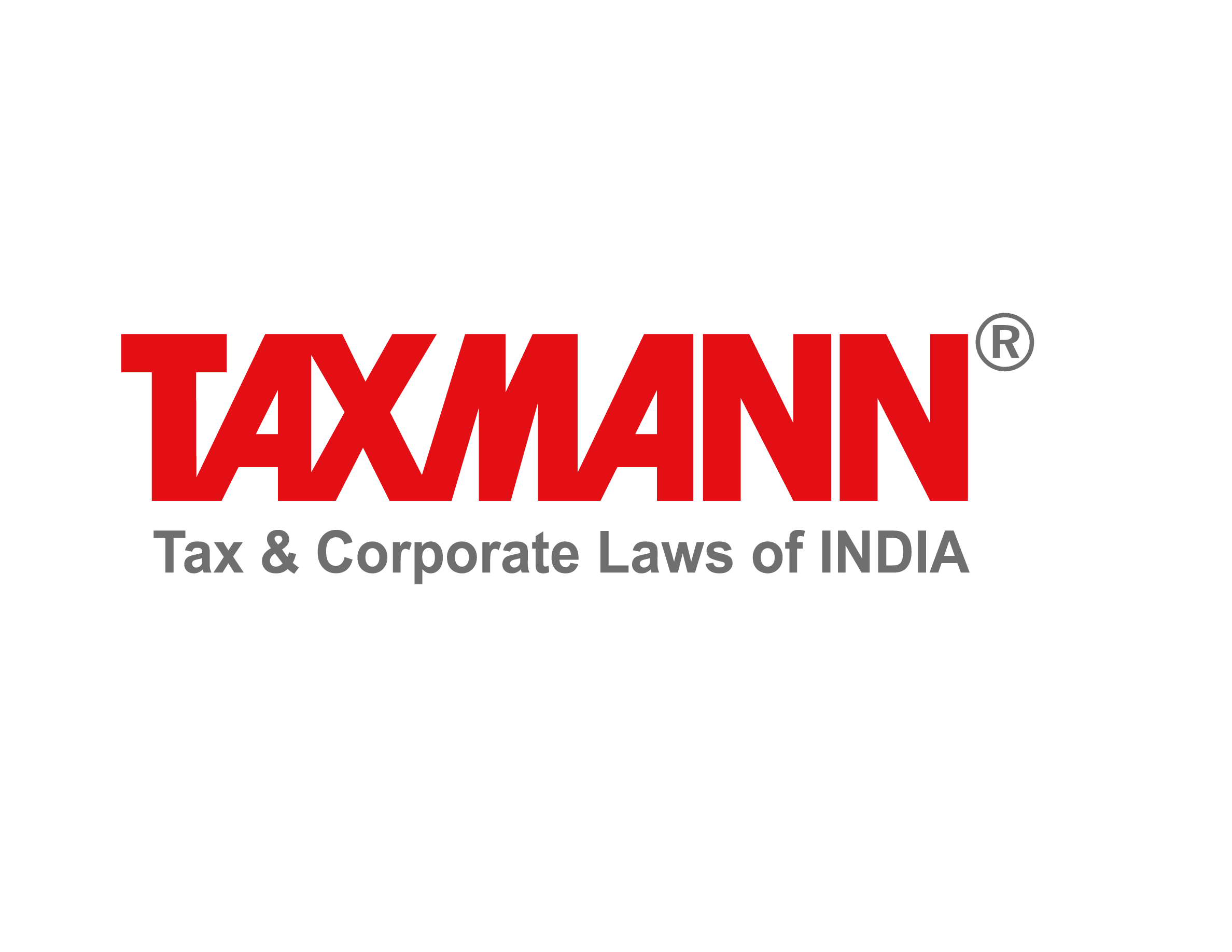
Taxmann Publications has a dedicated in-house Research & Editorial Team. This team consists of a team of Chartered Accountants, Company Secretaries, and Lawyers. This team works under the guidance and supervision of editor-in-chief Mr Rakesh Bhargava.
The Research and Editorial Team is responsible for developing reliable and accurate content for the readers. The team follows the six-sigma approach to achieve the benchmark of zero error in its publications and research platforms. The team ensures that the following publication guidelines are thoroughly followed while developing the content:
- The statutory material is obtained only from the authorized and reliable sources
- All the latest developments in the judicial and legislative fields are covered
- Prepare the analytical write-ups on current, controversial, and important issues to help the readers to understand the concept and its implications
- Every content published by Taxmann is complete, accurate and lucid
- All evidence-based statements are supported with proper reference to Section, Circular No., Notification No. or citations
- The golden rules of grammar, style and consistency are thoroughly followed
- Font and size that’s easy to read and remain consistent across all imprint and digital publications are applied
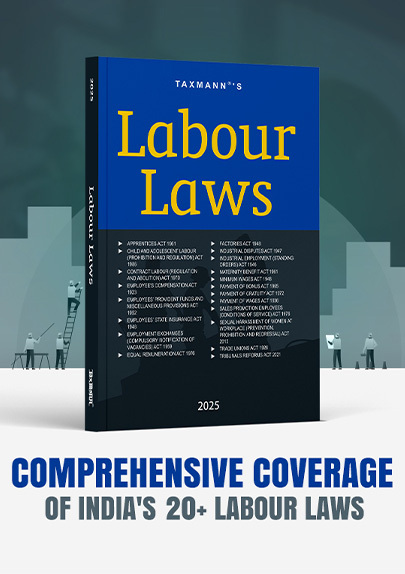
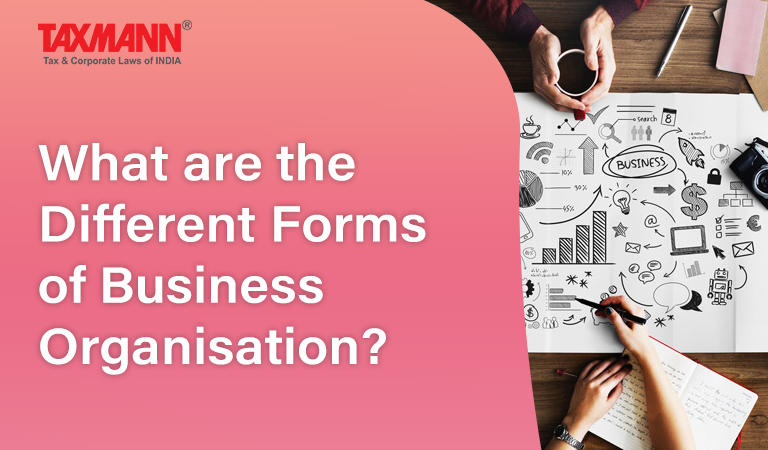


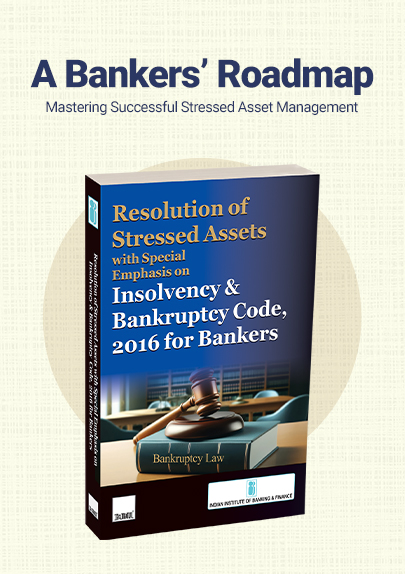
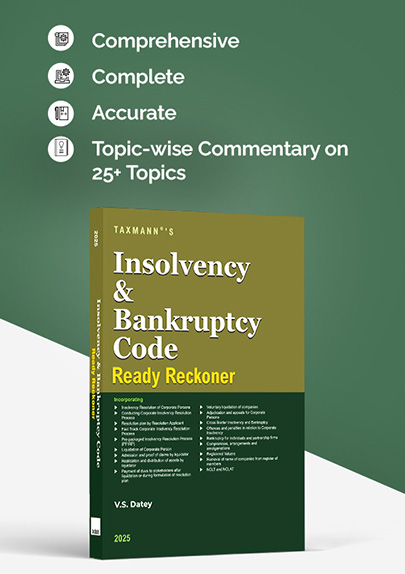


 CA | CS | CMA
CA | CS | CMA



One thought on “What are the Different Forms of Business Organisation?”